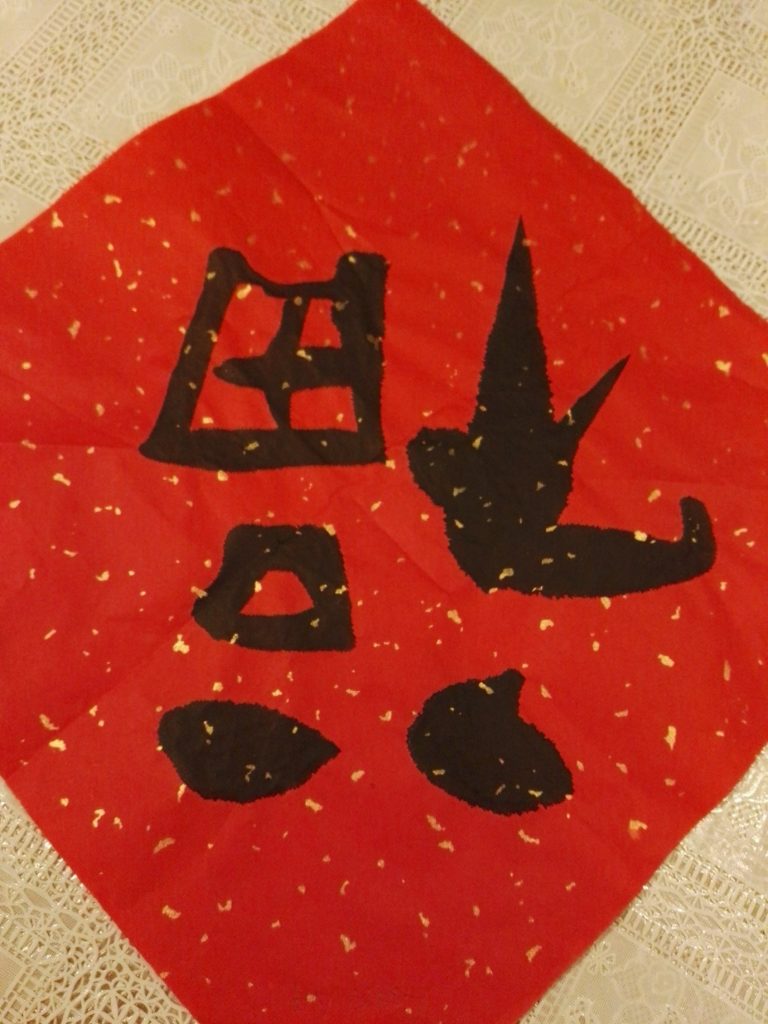We’ve received a collection of photographs and contributions from some staff and students across UoR sharing how they celebrate lunar new year with friends and family!
“My wife said for this Chinese New Year, she will put a red packet under the pillows of me and my daughter. It reminds me of my childhood memories of looking forward to receiving Yasuiqian (the red packet or lucky money) from my elders in the village in the Chinese New Year and we children needed to kowtou (kneel down with head touching the floor in front of the elders to show our respect) to receive it as part of the ritual – well, only symbolically as far as I can remember. Nowadays, kowtou is truly a thing of the past, but the folklore and the tradition of giving and receiving Yasuiqian (the lucky money) during the Chinese New Year have been passed on from generation to generation.
Why a red packet for the Chinese New Year? What does it symbolise?
I found the following brief story on the Yasuiqian (lucky money) shared by Cindy on Travelguide an interesting read:
https://www.chinahighlights.com/travelguide/festivals/red-envelop.htm
I look forward to my red packet! Wishing everyone a very happy, healthy and prosperous Chinese New Year of the Tiger!”
Dr Daguo Li, ISLI
“Chinese Lunar New Year (CLNY) is the most important festival for all Chinese in China and overseas. CLNY, of course, includes celebrations, delicious food, fireworks, visiting relatives and friends, while, more importantly, it is the time for family gatherings. A famous Chinese poem says “独在异乡为异客,每逢佳节倍思亲。” (All alone in a foreign land, I am twice as homesick on this day) During the year, I may be too busy to contact some relatives and friends. However, it is important to call all of them and give my 拜年(New Year Greetings) to them. With the development of social media, I can easily see them and 拜年 on WeChat. 2022 is the Year of Tiger 🐯. I wish all my relatives, friends and colleagues in the University of Reading 虎虎🐯🐯生威 (Forge ahead with the vigour and vitality of the tiger) in 2022.”
Dr Hong YANG (He/Him)
Associate Professor in Environmental Science
“Before the outbreak of COVID-19, Lunar New Year’s Day left me with many memories. Family and relatives gathered to thank our ancestors (“Chalye” in Korean), ate “tteokguk”, bow to adults with saying ‘Happy New Year'(“sebae” in Korean), and played traditional games such as “yutnori”. Since the spread of Corona 19, it has become difficult for family and relatives to gather on Lunar New Year’s Day, but I hope that we can get together again from this year and have a good time. Also, I wish all the students and staff at Reading University become a Happy New Year.”
YoungWoo Shin
Student at UoR Law School
 “A Chinese New Year Meal” – Yang Zhong
“A Chinese New Year Meal” – Yang Zhong
 “Children enjoy this festival most” – Yang Zhong
“Children enjoy this festival most” – Yang Zhong
 “Making dumplings during the new year eve is a family activity we all love” – Yang Zhong
“Making dumplings during the new year eve is a family activity we all love” – Yang Zhong
 “Door decoration of FU means good fortune usually goes with the spring festival couplets” – Carrie Zhang
“Door decoration of FU means good fortune usually goes with the spring festival couplets” – Carrie Zhang
 “Spring Festival Couplets are essential Chinese New Year decorations”
“Spring Festival Couplets are essential Chinese New Year decorations”
 “Writing Spring Festival Couplets” – Carrie Zhang
“Writing Spring Festival Couplets” – Carrie Zhang
 “Dumplings are an essential dish in the family reunion meal” – Carrie Zhang
“Dumplings are an essential dish in the family reunion meal” – Carrie Zhang
 “Giving Yasuiqian (red envelopes) is a very traditional practice and continues being popular among young and old”
“Giving Yasuiqian (red envelopes) is a very traditional practice and continues being popular among young and old”
 “Red lanterns in all shapes or sizes are another type of essential decorations for Chinese New Year” – Carrie Zhang
“Red lanterns in all shapes or sizes are another type of essential decorations for Chinese New Year” – Carrie Zhang
 “Visiting a temple fair or a local park with festive decorations is a popular way of spending the Chinese New Year holiday”
“Visiting a temple fair or a local park with festive decorations is a popular way of spending the Chinese New Year holiday”
 “A glimpse of street scene in Chengdu” – Yang Zhong
“A glimpse of street scene in Chengdu” – Yang Zhong
 “A local park in NingXia” – Peilan Zhang
“A local park in NingXia” – Peilan Zhang
“Hanging new year decors” – Yang Zhong
 “Street scene in Ningxia” – Peilan Zhang
“Street scene in Ningxia” – Peilan Zhang



